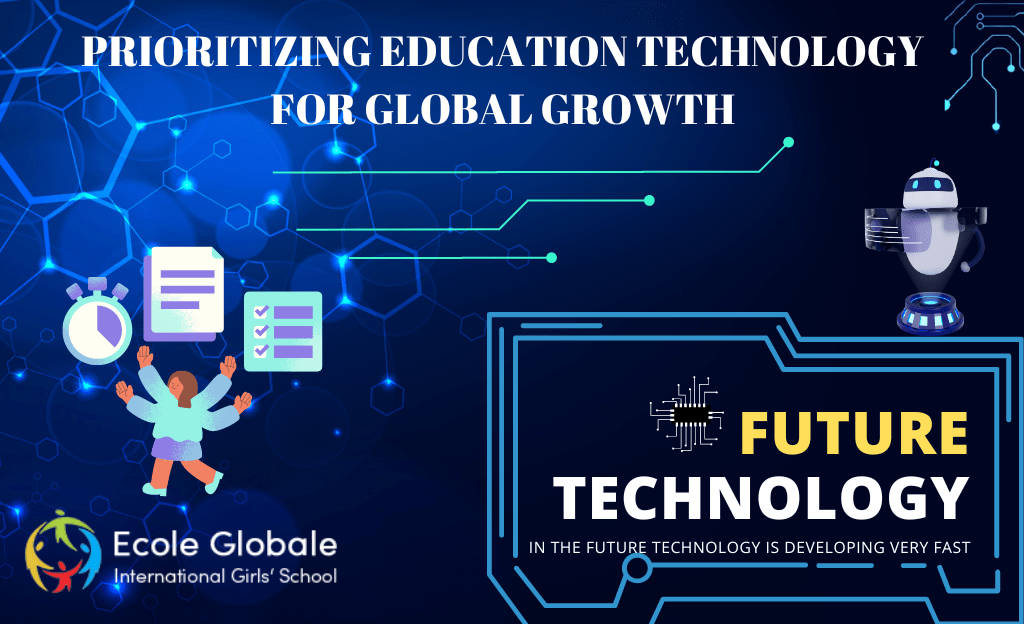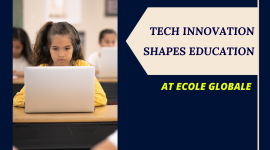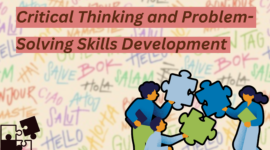Education technology refers to the use of digital tools and resources to enhance and transform the learning process. It has become increasingly important in today’s globalized world, where access to education and technological advancements are key drivers of economic and social development.
The adoption and prioritization of education technology can have numerous benefits for global growth, including increased access to education, personalized learning opportunities, and the promotion of innovation and entrepreneurship. Governments, private sector organizations, and other stakeholders can help drive economic and social development while creating a more equitable and prosperous world by investing in education technology.
Types of Education Technology:
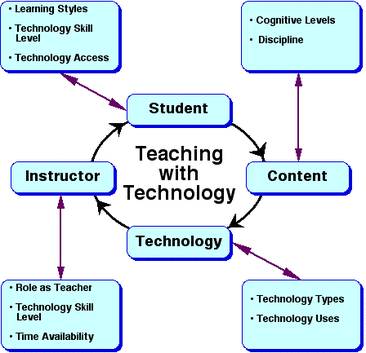
Learning Management Systems (LMS):
centralized systems for managing and delivering educational content, including course management, assessments, and collaboration tools.
Online Learning Platforms:
platforms for delivering educational content online, for self-paced learning, live virtual classrooms, or hybrid models.
Educational Apps:
software applications designed to support learning activities on mobile devices or computers, covering a range of subjects from language learning to math and science.
Gamification:
use of game design elements in non-game contexts, such as education, to engage learners, promote motivation, and enhance learning outcomes.
Virtual and Augmented Reality:
technologies providing immersive learning experiences by simulating real-world scenarios (virtual reality) or overlaying digital information onto the real world (augmented reality).
The Benefits of Education Technology:

- According to the Boarding schools in India, EdTech offers various advantages for both students and teachers. Firstly, it provides increased access to education through online learning platforms and educational apps, enabling learners to access educational resources from anywhere in the world at any time. This is especially useful for people who are unable to attend traditional classes due to geographic, economic, or other constraints.
- Secondly, EdTech enables personalized learning opportunities with adaptive learning technology. Learners can receive customized learning experiences tailored to their individual needs and learning styles, which improves learning outcomes and engagement.
- Thirdly, online learning has been shown to improve student outcomes and engagement. Students in online learning environments outperformed those in traditional classrooms, possibly due to the flexibility and self-directed learning experience that online learning provides.
- Finally, EdTech can also enhance teacher effectiveness by providing teachers with learning management systems, online assessments, and data analytics to streamline administrative tasks and enable them to focus on instruction and personalized support. This can ultimately lead to better learning outcomes for students.
The Potential of Education Technology to Transform Education
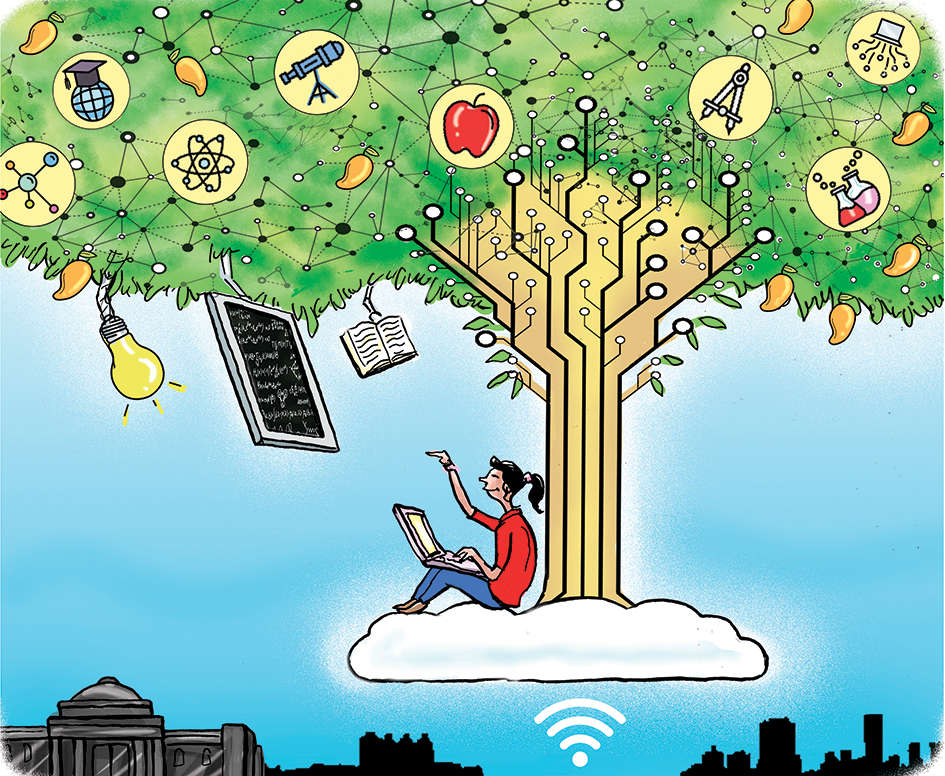
Education technology, or EdTech, has the potential to transform education in several ways. EdTech can enhance traditional teaching methods by providing teachers with tools like learning management systems, online assessments, and data analytics to streamline administrative tasks and enable personalized support for students.
Education Technology also offers innovative and interactive learning experiences through virtual and augmented reality technologies, gamification, and adaptive learning technology that can cater to individual needs and learning styles.
Furthermore, Education Technology can support global growth by providing equal educational opportunities for all learners regardless of their location, thus bridging the digital divide and driving economic development. As a result, EdTech offers exciting opportunities to improve education for learners of all ages and backgrounds, making it a valuable asset to the educational system.
Barriers to Adoption of Education Technology
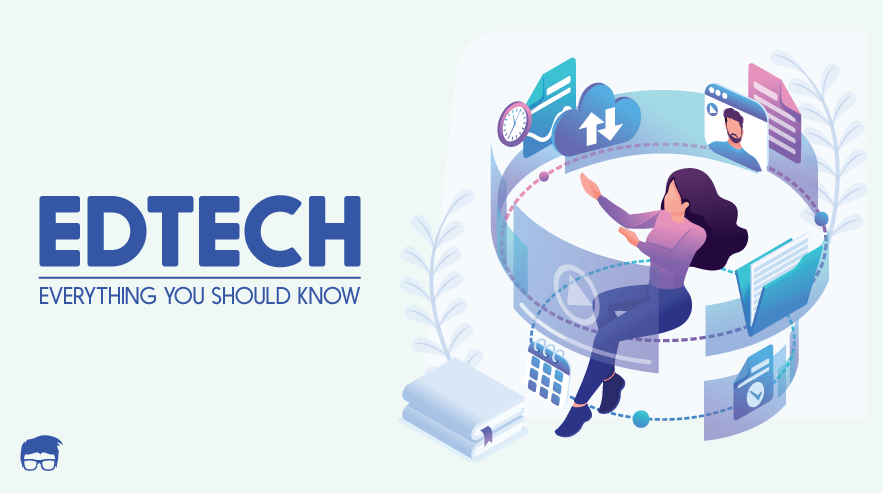
Education Technology can face challenges in being adopted in educational settings. This can limit the impact it has on student learning outcomes. Limited infrastructure, high cost, resistance to change, lack of training and support, and data privacy and security concerns are some common challenges. To overcome these barriers, policy changes, increased investment in Education Technology, professional development for teachers, and partnerships between schools and technology companies can be implemented.
Policy changes can increase funding for technology infrastructure, provide guidelines for data privacy and security, and promote professional development for teachers. Investment in Education Technology can provide schools with funding for devices, software, training, and support for teachers. Professional development for teachers can improve their ability to integrate EdTech into their teaching practice. Partnerships can pool resources and expertise to address infrastructure and cost barriers. By addressing these challenges, the adoption and impact of EdTech can be enhanced.
Best Practices for Implementing Education Technology

As per research conducted by Schools in India, To successfully implement education technology (EdTech), schools and educators need to follow best practices that involve careful planning, adequate resources, and effective training and support for teachers. By doing so, they can maximize the benefits of EdTech and enhance student learning outcomes.
One of the crucial strategies for the successful implementation of Education Technology is to set clear goals and objectives and develop a comprehensive plan for integrating technology into teaching and learning. Additionally, schools need to have adequate technology infrastructure, including high-speed internet and devices for students, and access to a variety of educational resources and software.
Equally important is the need for ongoing training and support for teachers to develop digital literacy skills that enable them to use technology effectively in their teaching practice. By providing teachers with the necessary skills and knowledge, schools can ensure they are equipped to maximize the benefits of EdTech.
Schools should also promote student engagement and ownership in the implementation of EdTech by fostering a culture of innovation. Regular evaluation and assessment of the impact of EdTech on student learning outcomes are essential, and schools should make necessary adjustments to improve effectiveness.
Effective EdTech models around the world include the “flipped classroom” model, which involves using online resources and technology to deliver content outside of the classroom, allowing for more interactive and engaging classroom activities. The blended learning model combines traditional classroom instruction with online and digital resources to provide students with more personalized learning experiences.
The personalized learning model uses technology to create customized learning experiences for students based on their individual needs and learning styles, while the gamification model uses game-based learning to engage students and promote motivation while enhancing learning outcomes.
Future Directions for Education Technology and Global Growth

The field of education technology (EdTech) is constantly evolving, with new trends and innovations emerging. One major trend is the use of artificial intelligence (AI) and machine learning to personalize learning experiences for students. Other areas of innovation include virtual and augmented reality, gamification, adaptive learning, and mobile learning.
The potential impact of EdTech on global growth is significant. It can improve access to education, enhance learning outcomes, and promote 21st-century skills. Furthermore, the development of new technologies and tools can create new industries and job opportunities, contributing to economic growth and development.
To fully realize the potential of EdTech, investment in research and development, innovation, teacher/student training, and support are crucial. Governments can support EdTech implementation and access to digital resources through policy, and educational institutions can prioritize the integration of EdTech into teaching and learning. By collaborating to ensure the responsible and effective use of technology, stakeholders can support the promotion of global growth through EdTech.
Conclusion
Education technology (EdTech) has the potential to revolutionize education and drive global growth by promoting access to education, enhancing learning outcomes, and developing 21st-century skills. Despite challenges in the adoption and implementation of EdTech, solutions, and best practices exist to ensure successful integration.
To achieve this, governments, educational institutions, and other stakeholders need to prioritize investment in EdTech so learners across the world can access high-quality education and prepare for future success. With the continued emergence of new technologies such as AI, machine learning, and virtual and augmented reality, the field of EdTech will undoubtedly continue to grow and evolve. Stakeholders must continue to invest in EdTech research and development, implementation, and digital literacy training for teachers and students to drive innovation and promote global growth in the years ahead.






